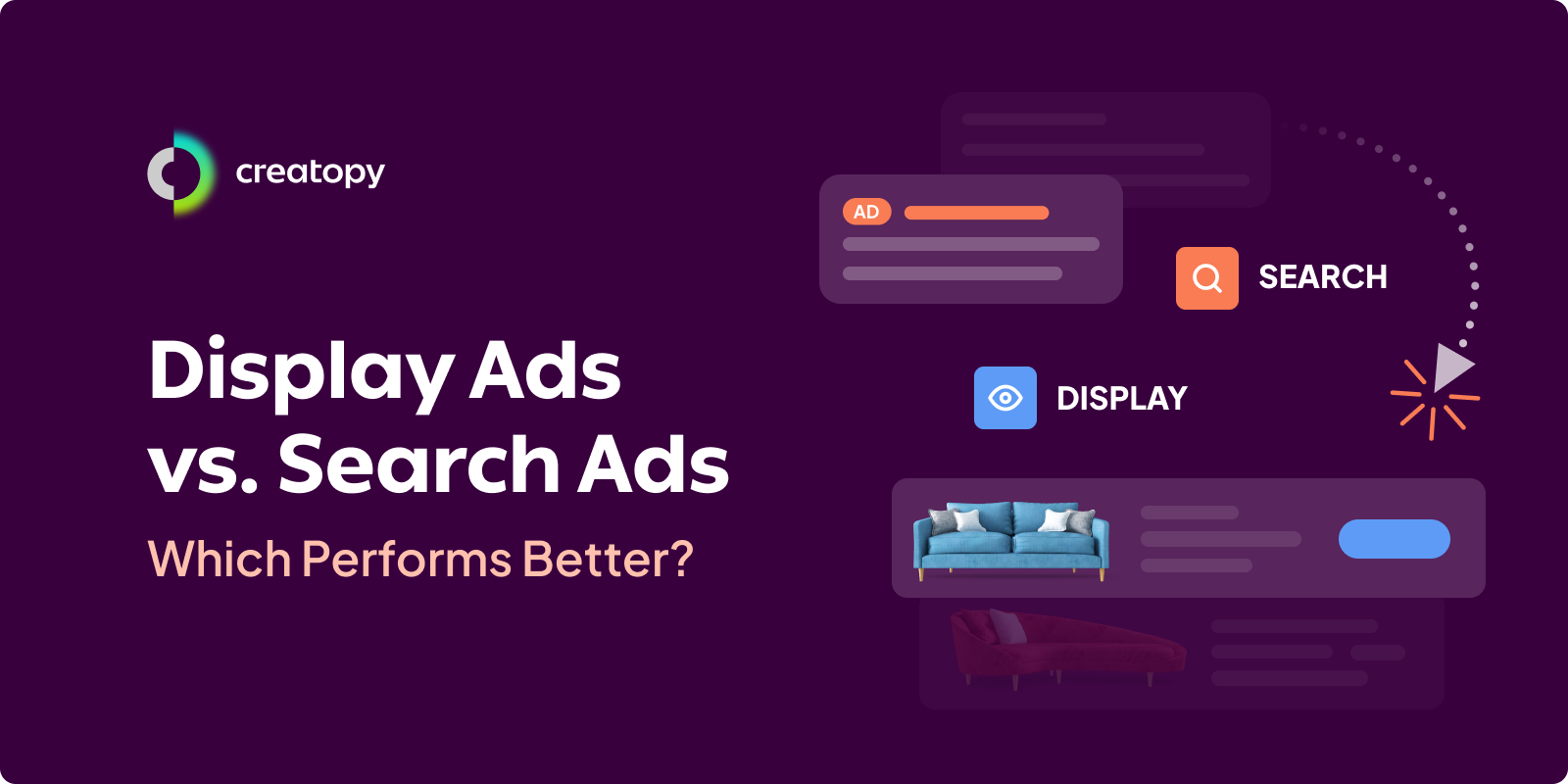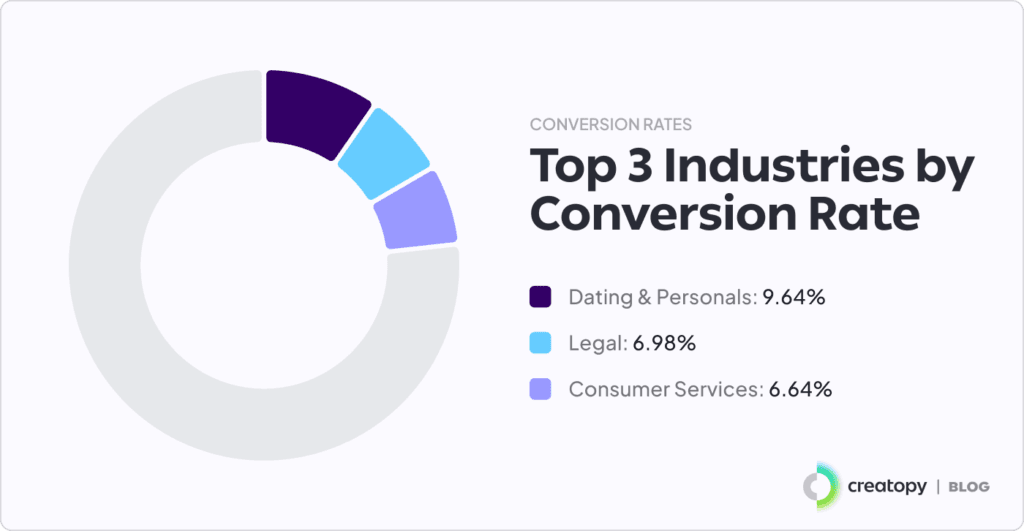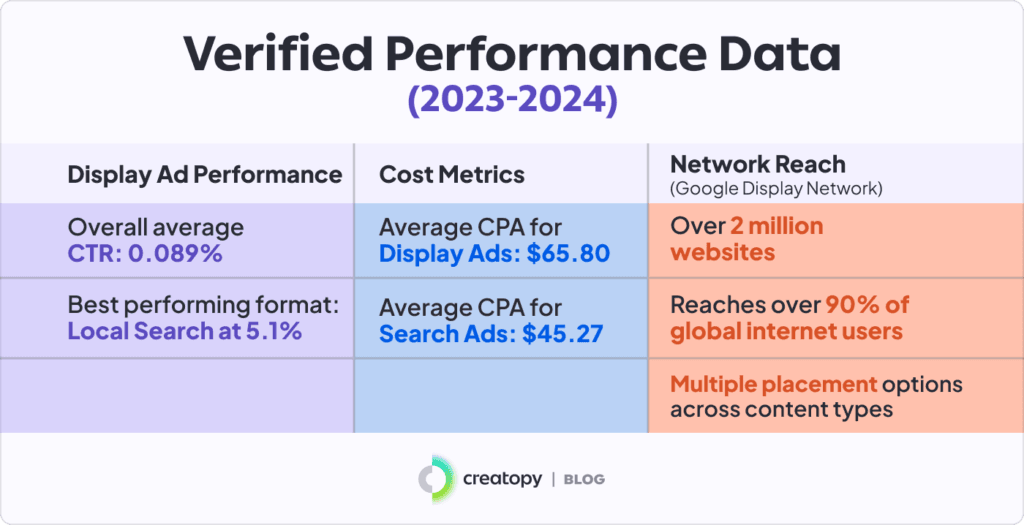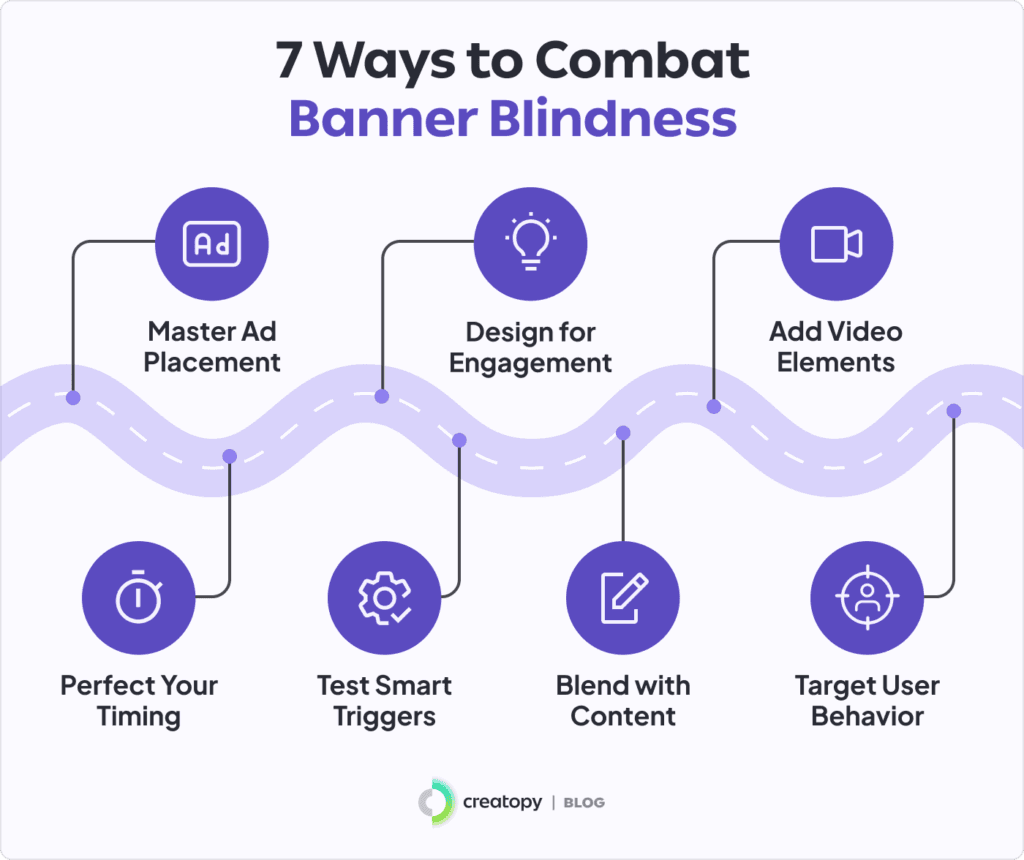Are you an agency? Scale your team's work and impact with The Agency Package.
Are you an agency? Scale your team's work and impact with The Agency Package.

The choice between display vs search advertising isn't just a tactical decision—it's a strategic one that can shape your campaign's success. We're seeing marketers navigate both Google search advertising and digital display advertising while trying to make the most of each channel's unique strengths. And with technology getting smarter by the day, we now have sophisticated delivery systems that use AI and machine learning to put the right ad in front of the right person at the right time.
You'll find that the difference between search and display ad approaches goes deeper than where they appear. Sure, such choices affect your results, but the technology behind them and how well you can optimize them makes the difference. So, let's explore both types and how you can take advantage of them.

Search advertising is placing online advertisements on web pages showing search engine query results. Therefore, Google ads search is where intent meets opportunity. According to FirstPageSage, search ads get impressive results across industries—addiction treatment gets a 5.9% click-through rate in top spots, while entertainment follows at 4.2%. These numbers tell us something important about paid search advertising—when people are actively looking for solutions, they're more likely to engage.
IndustryCTR for #1 Search AdAddiction Treatment5.9%Entertainment4.2%Hotels & Resorts3.4%HVAC Services3.2%Higher Education & College3.1%CBD3.1%Home Services2.9%Home Builders2.7%eCommerce2.7%Solar Energy2.7%Real Estate2.6%Legal Services2.5%Medical Practices2.3%Financial Services2.1%SaaS2.1%Automotive1.8%Aviation1.4%Medical Device1.2%Construction1.1%
Even more, search engine advertising operates through sophisticated algorithms that match user queries with relevant advertisements. It's not just about matching keywords anymore—it also looks at quality scores, bid amounts, and past performance. Google search engine marketing now considers many factors when deciding where to place ads and how well they'll work.
Digital display advertising is the use of visual media for online marketing and offers many creative options across websites, apps, and social media. This includes everything from simple banner ads to interactive content. While display advertising works differently from search, it's essential for building brand awareness.
When considering display ads, remember that modern systems rely on smart technology to understand user behavior and interests. This targeting helps show ads in places where they make sense and reach people who are likely to be interested. So, Google display advertising is particularly effective when you need to reach people across different online environments.
Search ads and display ads work differently but can support each other in online marketing. Understanding their strengths helps you create campaigns that really perform:
Search Google Ads benefits:

The real strength of search advertising shows up in the numbers when we look at performance across different industries. Once again, here's what the click-through rate (CTR) data from 2023-2024 tells us:

While these click-through rates show how different industries perform, the conversion numbers are even more impressive—especially in Dating & Personals leading at 9.64%, followed by Legal and Consumer Services:

Display advertising does more than just get immediate sales. When looking at Google display advertising, consider these benefits:
Let's also look at the standard display ad formats that make these benefits possible. Understanding these dimensions is crucial for creating ads that perform well across the Google Display Network:

These format specifications give us a solid foundation, but what matters most is how they perform in real-world campaigns. The latest performance data from 2023-2024 gives us valuable insights into what advertisers can expect:

We're also honest about the challenges in Google search advertising. These go beyond just competing for keywords and include technical, strategic, and budget issues that marketers need to handle carefully.
The biggest challenge? The limited visual options affect how well you can tell your brand's story. Advertisers must work with strict character limits and text-only formats, making sharing complex messages or emotional content difficult. As users expect more visual content online, advertisers must find creative ways to stand out within these limits.
Also note that the cost-per-click rates for competitive keywords tend to be significantly higher than display advertising, though this increased cost often correlates with higher intent. According to FirstPageSage, while search ads deliver stronger immediate conversion rates, the high cost of popular keywords can quickly use up your advertising budget, especially in competitive industries. This means you must balance staying visible with keeping costs under control.
Other challenges in search advertising include:
Display advertising has its own challenges that go beyond basic issues. These include technical problems, how users behave, and cost considerations that marketers must address.
Banner blindness is a major issue in display advertising—users simply ignore many display ads. People have learned to tune out advertisements, meaning advertisers must strategically create and place excellent designs. Studies show that users develop "blind spots" where ads usually appear, so advertisers must constantly find new ways to catch attention.

Also, the average click-through rates for display tend to be lower than search, though this metric alone doesn't tell the complete story. According to FirstPageSage, while display ads maintain lower immediate engagement rates, they help build brand awareness and lead to sales over time. This creates a balance between quick results and long-term benefits.
The main challenges in display marketing include the following:
When deciding between display and search advertising, you need to look at your goals, audience, and resources carefully. Start by clarifying what you want to achieve—whether that's quick sales, better brand awareness, or both.
Your business's age and recognition matter when picking advertising types. Established brands usually do better with search ads since people already know and look for them. New businesses or those entering new markets, however, often get better results with digital display advertising to build initial awareness.
What you sell also affects which advertising works best. Complex products or services that need explanation often work best with both types—using display advertising to educate people and search engine advertising to capture their attention during their research phase. Furthermore, how your target audience uses the internet should guide your choice between Google search vs display network advertising. Look at where your potential customers spend time online and how they make buying decisions. Some respond better to visual ads through display marketing, while others prefer direct search ads when they need something.
Of course, your budget and expected returns need careful thought. While search engine advertising costs more per click, it usually leads to more direct sales. Display advertising costs less per view but typically needs a longer investment to build awareness and get sales. Competition in your industry should shape this choice, too. In highly competitive fields with expensive keywords, using both search and display ads often works better than just one type. This helps you stay visible while keeping costs under control.
Services or products that require visual demonstration typically perform better with display advertising, where you can use pictures and videos. Simple products often do better with search ads, where text can quickly explain the benefits.
Moreover, think about your team's skills and resources when choosing ad types. Display advertising needs more design work and creativity, while search advertising needs keyword research and bid management skills. Therefore, your team's strengths and available resources should significantly influence your decision.
Finally, consider how you'll measure success. Search advertising makes it easier to track direct sales, while display advertising works better for brand building, though it's harder to measure exact results.
Discovery ads offer new ways to reach engaged audiences. While they do share some features with display ads, they work differently and offer unique benefits.
Key differences between discovery and display ads include:
FeatureDiscovery AdsDisplay AdsWhere They Appear• Inside content feeds
• Looks like natural content
• Part of user's browsing• Banner spaces
• Side of webpage
• Stand-alone ad spacesHow They Look• Multiple pictures
• Longer text allowed
• Tells a story• Single image/banner
• Limited text
• Standard ad sizesSmart Features• Uses AI to find viewers
• Learns from user behavior
• Shows to interested people• Basic targeting
• Shows on chosen websites
• Matches user interestsSuccess Rate• Higher engagement
• Users actively exploring• 0.089% click rate
• $65.80 per actionBest For• Brand stories
• Product education
• Complex products• Brand awareness
• Quick promotions
• Retargeting
Discovery ads work particularly well considering the following:
Understanding these differences helps advertisers pick the right format for their goals and audience. The choice often depends on what you want to achieve, who you want to reach, and your creative resources.
Here's where things get interesting—and where The Brief steps in. Running effective campaigns across both search and display advertising isn't just about creating ads; it's about delivering them smartly. Our platform makes this process smooth and efficient with tools that make sense for busy marketers.
Let's look at what makes campaign management click:
Success in search engine advertising and display marketing needs careful performance tracking and constant improvements. Specifically, modern analytics platforms offer deep visibility into user behavior, engagement patterns, and conversion paths across both search ads and traditional display campaigns. By looking carefully at metrics like click-through rates, conversion rates, and cost per sale, you can find ways to improve. And yes, this data-driven approach ensures improvements are based on real results rather than guesses.
When it comes to A/B testing, it's about finding what resonates with different audience segments and why. The best part? Advanced testing tools let us learn faster and adapt quicker than ever before.
For budget planning, understanding the difference between search ad and display ad results needs careful analysis of both direct and indirect sales. Attribution modeling helps show how different channels help create sales in Google search vs display network environments. By tracking how customers interact across multiple touchpoints, advertisers can make better decisions about where to spend their budget.
Understanding how different audience groups respond also offers key insights for targeting in both Google display advertising and search engine advertising. By analyzing how different groups react to various ad formats, messages, and offers, you can keep improving your targeting and campaign efficiency. As for the new analytics tools, they create better opportunities for real-time improvements and better performance in paid search advertising advantages and disadvantages scenarios. Machine learning can spot patterns humans often miss and automatically adjust campaigns based on performance data, ensuring the best use of budgets across both search and display campaigns.
No less important, as privacy regulations evolve and tracking capabilities change, we'll need to get creative with measuring and optimizing Google search engine marketing. But that's not a limitation—it's an opportunity to build stronger, more meaningful connections with our audiences.
Remember how Leo Burnett said, "I am one who believes that one of the greatest dangers of advertising is not that of misleading people, but that of boring them to death"? Today, standing out means being relevant, not just visible. Whether crafting search ads or designing display campaigns, success comes from understanding your audience and delivering value in every interaction.
That's what makes digital advertising exciting—it's constantly evolving, but the fundamentals of connecting with people remain the same. The future of digital advertising isn't about choosing between channels—it's about using them intelligently together. When you understand the unique strengths of both search and display advertising, you can create campaigns that don't just reach people—they resonate with them and guide customers through their entire journey from awareness to conversion.
7 days free on us
Let's put these insights into action. Build, scale, and automate campaigns with AI-powered workflows.